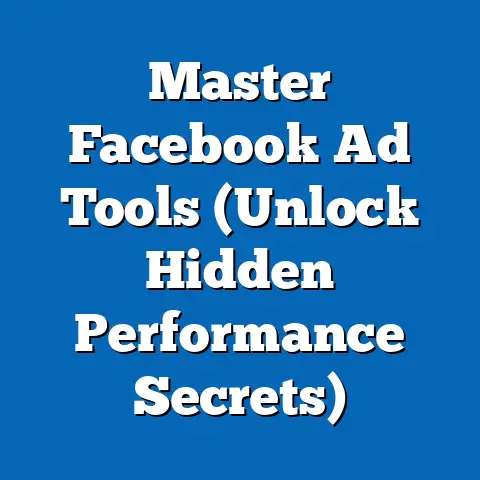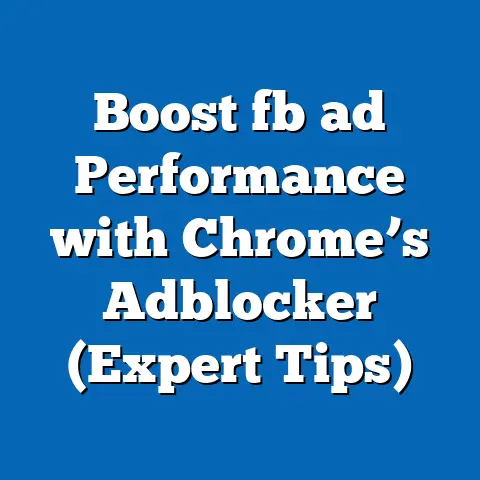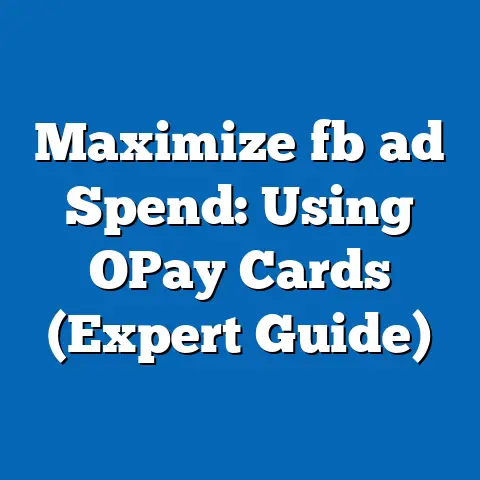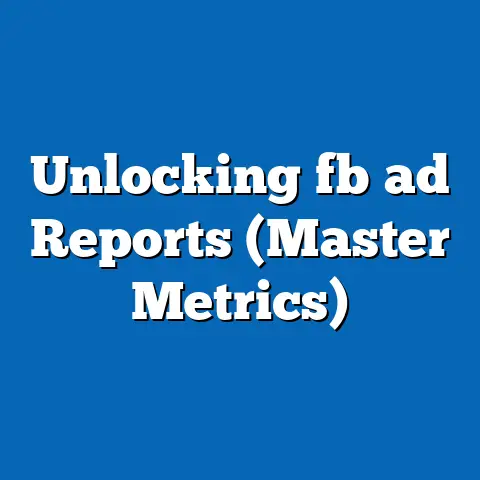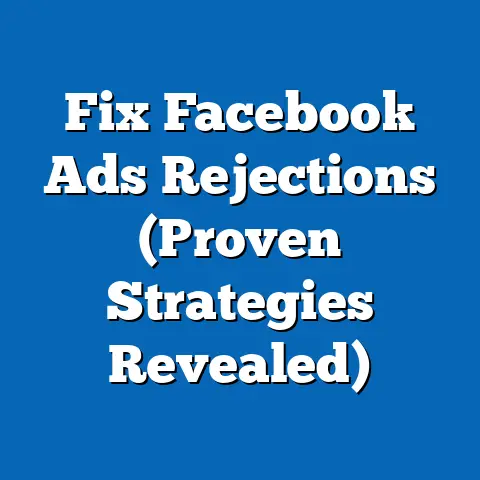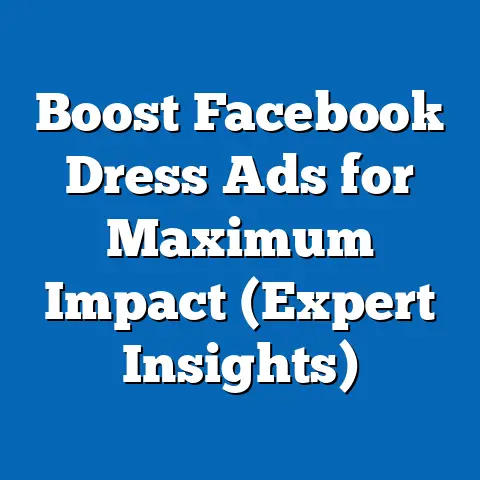Boost Bose Facebook Ads (Secrets to Higher Conversions)
Modern aesthetics, as a design and cultural philosophy, emphasizes simplicity, functionality, and minimalism while embracing technological innovation and contemporary materials. Emerging as a dominant force in the late 20th and early 21st centuries, it builds on the foundations of modernism from the early 1900s but adapts to the digital age with a focus on clean lines, neutral palettes, and user-centric design.
Historically, modern aesthetics are rooted in the post-World War II era, where the need for efficient, affordable design led to movements like Bauhaus and mid-century modern. These ideologies prioritized form following function, a principle that resonates today in everything from architecture to digital interfaces. The societal shift toward globalization and the rise of technology further shaped modern aesthetics, as digital tools enabled seamless, borderless design trends.
Societally, modern aesthetics reflect a collective desire for clarity and accessibility in an increasingly complex world. They signal a break from ornate, traditional styles, mirroring a cultural pivot toward individualism, sustainability, and innovation. This aesthetic underpins much of today’s branding and marketing, including how companies like Bose position their products as sleek, cutting-edge, and essential to modern lifestyles.
The implications of modern aesthetics are vast, influencing consumer behavior, workplace environments, and digital experiences. For brands like Bose, aligning with these principles in advertising—particularly on platforms like Facebook—can create a visual and emotional connection with audiences who value sophistication and simplicity. This article explores how Bose can leverage modern aesthetics and strategic Facebook advertising to boost conversions, delving into the secrets of effective campaigns while grounding the analysis in demographic trends, generational dynamics, and data-driven insights.
The Intersection of Modern Aesthetics and Brand Identity
Bose, a leader in audio technology, has long positioned itself as a brand synonymous with innovation, quality, and minimalist design. The company’s products—ranging from noise-canceling headphones to portable speakers—embody modern aesthetics through sleek, functional designs that prioritize user experience over unnecessary embellishment.
This alignment with modern aesthetics is not accidental. It taps into a cultural zeitgeist where consumers, especially younger generations like Millennials and Gen Z, prioritize products that integrate seamlessly into their fast-paced, tech-driven lives. For Bose, this means crafting a brand identity that communicates sophistication and utility, both visually and functionally.
In the context of social media marketing, particularly on Facebook, modern aesthetics translate into ad creatives that are visually clean, with high-quality imagery, minimal text, and a focus on the product’s core value proposition. Such design choices resonate with audiences accustomed to scrolling through polished, curated content on their feeds. By leveraging these principles, Bose can create ads that stand out while maintaining authenticity and relatability.
Understanding the Role of Facebook Ads in Today’s Marketing Landscape
Facebook remains a powerhouse in digital advertising, with over 2.9 billion monthly active users as of 2023, according to Statista. Its unparalleled reach, combined with advanced targeting capabilities, makes it an ideal platform for brands like Bose to connect with diverse demographics. However, the platform’s competitive ad space demands strategies that cut through the noise and drive meaningful engagement.
The evolution of Facebook advertising reflects broader societal and technological shifts. From static banner ads in the early 2000s to immersive video content and interactive formats today, the platform has adapted to changing user preferences shaped by modern aesthetics and digital consumption habits. For Bose, this means crafting ads that are not only visually appealing but also tailored to specific audience segments.
Moreover, Facebook’s algorithm prioritizes content that drives engagement—likes, shares, comments, and clicks. This creates a unique challenge for advertisers: balancing aesthetic appeal with actionable messaging. As we’ll explore, Bose can achieve higher conversions by aligning ad design with modern aesthetics while incorporating proven tactics like storytelling, urgency, and personalized targeting.
Generational Dynamics and Facebook Advertising
Baby Boomers (Born 1946–1964)
Baby Boomers, shaped by post-war prosperity and the rise of traditional media, represent a significant but often overlooked segment on Facebook. While not digital natives, many Boomers have adopted social media to stay connected with family and access information. According to a 2022 Pew Research Center report, 70% of Boomers use Facebook, making it a key platform to reach this demographic.
For Bose, targeting Boomers requires a focus on nostalgia and reliability. Ads that highlight the brand’s legacy of quality audio—perhaps referencing iconic Bose products from the 1980s or 1990s—can evoke emotional resonance. Visually, these ads should adhere to modern aesthetics with clear, uncluttered layouts, as Boomers value straightforward messaging over flashy design.
However, Boomers are diverse in their tech adoption. While some are comfortable with online shopping, others may need additional trust signals, such as customer testimonials or money-back guarantees. Bose can boost conversions by incorporating these elements into ad copy while maintaining a polished, modern look.
Generation X (Born 1965–1980)
Generation X, often caught between analog and digital worlds, is a pragmatic and skeptical cohort. Having witnessed the transition from traditional to digital media, they value authenticity and are less swayed by overt marketing tactics. On Facebook, where 66% of Gen Xers are active (Pew Research Center, 2022), they seek content that feels genuine and relevant to their needs.
For Bose, targeting Gen X involves emphasizing practical benefits—superior sound quality, durability, and ease of use. Ads should avoid gimmicks and focus on real-world applications, such as using Bose products during travel or work-from-home setups. Modern aesthetics play a role here by ensuring ads feel current and professional, aligning with Gen X’s appreciation for understated style.
Moreover, Gen X is often in a life stage where disposable income is higher, making them a valuable market for premium products. Bose can drive conversions by offering exclusive deals or bundles in ads, paired with clean, minimalist visuals that reflect the brand’s modern identity.
Millennials (Born 1981–1996)
Millennials, the first true digital natives, are a core demographic for Bose on Facebook. With 72% using the platform regularly (Pew Research Center, 2022), they are highly engaged with social media and responsive to visually driven content. Shaped by the 2008 financial crisis and rapid technological advancements, Millennials value experiences over possessions and seek brands that align with their values.
Bose can appeal to Millennials by focusing on lifestyle integration—how products enhance travel, fitness, or remote work. Ads should incorporate modern aesthetics through dynamic video content, showcasing diverse individuals using Bose products in urban or outdoor settings. Color schemes should be neutral yet bold, reflecting trends in modern design.
Additionally, Millennials respond well to social proof and user-generated content. Including reviews or influencer endorsements in ads can build trust and drive conversions. Bose should also experiment with interactive ad formats, like polls or carousel ads, to maintain engagement with this tech-savvy cohort.
Generation Z (Born 1997–2012)
Gen Z, the youngest adult demographic, is redefining digital engagement. Born into a world of smartphones and social media, they prioritize authenticity, inclusivity, and innovation. While their Facebook usage is slightly lower than older generations (around 50%, per Pew Research Center, 2022), they remain a critical audience due to their influence on trends and brand perception.
For Bose, targeting Gen Z requires a bold, creative approach. Ads should lean heavily on modern aesthetics—think vibrant yet minimalist designs, short-form video content, and relatable messaging. Highlighting Bose’s commitment to sustainability or cutting-edge tech (like wireless features) can resonate with Gen Z’s values.
Furthermore, Gen Z craves personalization. Bose can leverage Facebook’s dynamic ad capabilities to tailor content based on browsing history or interests, ensuring ads feel relevant rather than intrusive. Conversions can be boosted by incorporating gamification or limited-time offers, appealing to Gen Z’s desire for immediacy and exclusivity.
Secrets to Higher Conversions with Bose Facebook Ads
1. Leverage Modern Aesthetics in Visual Design
The first step to higher conversions is creating ads that visually align with modern aesthetics while reflecting Bose’s brand identity. Use high-resolution images or videos of products against clean, neutral backgrounds to emphasize simplicity and sophistication. Avoid clutter—focus on one key message or feature per ad, such as noise cancellation or battery life.
Typography should be sans-serif and legible, adhering to minimalist design principles. Color palettes should be muted yet contemporary, with occasional pops of color to draw attention to calls-to-action (CTAs). This approach not only aligns with modern aesthetics but also ensures ads stand out in crowded Facebook feeds.
Data supports the effectiveness of aesthetic-driven ads. A 2021 study by Nielsen found that visually appealing ads increase brand recall by 89%. For Bose, investing in polished, modern visuals can translate into higher engagement and conversions.
2. Segment Audiences with Precision Targeting
Facebook’s robust targeting tools allow Bose to segment audiences by age, interests, behaviors, and even life events. For instance, targeting Millennials with ads for portable speakers during travel season or Gen Xers with home audio systems during holiday periods can yield higher relevance and click-through rates (CTRs).
Beyond demographics, psychographic targeting—focusing on values, hobbies, and lifestyle—can enhance ad performance. Bose could target audiophiles, fitness enthusiasts, or remote workers with tailored messaging that speaks to their specific needs. According to a 2022 HubSpot report, personalized ads improve CTRs by 14% on average, underscoring the value of segmentation.
It’s also crucial to test different audience segments. A/B testing ad variations across generational cohorts can reveal which messages resonate most, allowing Bose to refine campaigns for maximum impact.
3. Craft Compelling, Value-Driven Copy
While visuals are critical, ad copy plays an equally important role in driving conversions. Bose should focus on concise, benefit-oriented messaging that highlights what sets their products apart—be it immersive sound, durability, or seamless connectivity. Avoid generic claims and instead use specific, relatable language.
For example, an ad targeting Millennials might read, “Elevate your WFH setup with Bose QuietComfort—block distractions, boost focus.” This speaks directly to a common pain point while maintaining a modern, conversational tone. Including a strong CTA, like “Shop Now for 20% Off,” creates urgency and encourages immediate action.
Research from WordStream (2023) shows that ads with clear CTAs achieve 28% higher conversion rates. Bose can experiment with emotional triggers (e.g., “Hear Every Moment”) versus functional ones (e.g., “30-Hour Battery Life”) to determine what drives the best results across generations.
4. Utilize Video and Interactive Formats
Video content dominates social media engagement, with Facebook reporting that video ads receive 135% more organic reach than static images. For Bose, short, visually stunning videos that showcase products in real-life scenarios—think a runner using Bose earbuds or a family enjoying a home speaker—can capture attention within the first three seconds, a critical window for retaining viewers.
Interactive formats like carousel ads or polls also boost engagement. A carousel ad could display multiple Bose products with individual benefits, allowing users to swipe through at their own pace. Polls, such as “What’s your go-to playlist? Vote now!” paired with a Bose product plug, encourage interaction and build brand affinity.
Modern aesthetics should guide these formats—clean transitions, minimal text overlays, and high-quality production values are non-negotiable. A 2022 study by Wyzowl found that 73% of consumers are more likely to purchase after watching a branded video, making this a key strategy for Bose.
5. Incorporate Social Proof and Trust Signals
Trust is a cornerstone of conversion, especially in a competitive market like audio technology. Bose can leverage social proof by including customer reviews, ratings, or influencer endorsements in ads. For instance, a quote like “Best headphones I’ve owned—worth every penny!” from a verified buyer can sway hesitant shoppers.
Additionally, trust signals like “Free Shipping,” “30-Day Returns,” or “Limited Lifetime Warranty” reduce purchase anxiety. These should be prominently displayed in ad visuals or copy, adhering to modern aesthetics by keeping the design uncluttered. According to Baymard Institute (2023), 60% of online shoppers abandon carts due to trust issues, highlighting the importance of reassurance in ads.
For younger generations like Gen Z and Millennials, featuring user-generated content (UGC) can be particularly effective. Reposting customer photos or videos using Bose products adds authenticity, a value these cohorts prioritize over polished marketing.
6. Optimize for Mobile and Speed
With over 98% of Facebook users accessing the platform via mobile devices (Statista, 2023), Bose must ensure ads are mobile-optimized. This means fast-loading creatives, vertical video formats (9:16 aspect ratio), and thumb-friendly CTAs. Modern aesthetics play a role here—minimalist designs load faster and are easier to consume on small screens.
Page speed and seamless checkout processes are also critical. Linking ads to mobile-optimized landing pages with quick load times can reduce bounce rates. Google’s 2022 data indicates that a one-second delay in page load time can decrease conversions by 7%, emphasizing the need for technical optimization alongside aesthetic appeal.
Bose should also consider Facebook’s Instant Experience ads, which offer immersive, full-screen experiences without leaving the app. These can showcase product features in a modern, interactive way, driving both engagement and conversions.
7. Test, Analyze, and Iterate
For instance, if a minimalist ad design underperforms with Boomers, Bose might test a warmer, more nostalgic aesthetic while retaining modern elements. Conversely, if Gen Z responds poorly to static images, shifting to video content could improve results. A 2023 report by Social Media Examiner found that 64% of marketers who regularly test ads see a 20% or higher increase in conversions.
Iterating based on data ensures campaigns remain relevant in a dynamic digital landscape. Bose should also monitor broader trends in modern aesthetics and generational preferences to stay ahead of the curve.
Societal and Cultural Implications of Targeted Advertising
However, targeted advertising raises ethical considerations, particularly around privacy and manipulation. Generations like Gen Z and Millennials, while tech-savvy, are increasingly wary of data misuse, as evidenced by a 2022 Edelman Trust Barometer report showing 60% of consumers distrust how brands handle personal information. Bose must balance personalization with transparency, ensuring ads feel helpful rather than intrusive.
Moreover, the diversity within generations means not all individuals fit neatly into demographic molds. Cultural, economic, and regional differences influence how ads are perceived, requiring Bose to adopt an inclusive approach. For example, featuring diverse models in ad creatives or addressing accessibility in product messaging can broaden appeal while reflecting modern societal values.
In the workplace, these advertising strategies can inform internal branding and employee engagement. Younger employees, accustomed to modern aesthetics and digital-first communication, may respond well to Bose campaigns that mirror their personal values, enhancing brand advocacy from within. Conversely, older employees might appreciate campaigns that honor the company’s legacy, bridging generational divides.
Economic and Technological Factors Shaping Ad Success
Economically, the audio technology market is booming, with a projected value of $34.5 billion by 2028 (Market Research Future, 2023). This growth, driven by demand for wireless and smart audio devices, creates both opportunity and competition for Bose. Facebook ads, with their relatively low cost-per-impression compared to traditional media, offer a cost-effective way to maintain market share.
Technologically, advancements in AI and machine learning enhance ad targeting and performance. Facebook’s algorithms can predict user behavior with increasing accuracy, allowing Bose to deliver ads at optimal times and to the most relevant audiences. However, rapid tech evolution also means staying updated—formats like augmented reality (AR) ads or voice-activated CTAs may soon become mainstream, requiring Bose to adapt its modern aesthetic approach.
Economic disparities across generations also play a role. While Gen X and Boomers may have more purchasing power, Millennials and Gen Z often face financial constraints, making discounts or financing options in ads particularly effective. Bose must navigate these dynamics to maximize conversions without alienating budget-conscious consumers.
Forward-Looking Insights and Uncertainties
Looking ahead, the interplay between modern aesthetics and digital advertising will continue to evolve. As virtual and augmented reality technologies mature, Bose could explore immersive ad experiences that allow users to “test” products virtually, aligning with modern design’s focus on user-centricity. However, the adoption rate of such tech remains uncertain, particularly among older generations.
Generational shifts will also reshape advertising priorities. As Gen Z enters the workforce in greater numbers and Gen Alpha (born after 2012) begins to influence trends, Bose must anticipate changing values—potentially a deeper focus on sustainability or digital-first lifestyles. Modern aesthetics may adapt to incorporate bolder, more experimental elements to appeal to these emerging cohorts.
Privacy regulations, such as the EU’s GDPR and California’s CCPA, pose another uncertainty. Stricter data laws could limit targeting capabilities on platforms like Facebook, forcing Bose to rely more on organic engagement and brand storytelling. While modern aesthetics provide a strong foundation for visually compelling content, the loss of granular targeting may challenge conversion rates.
Finally, the enduring appeal of modern aesthetics itself is not guaranteed. Cultural backlashes against minimalism—already visible in niche movements like maximalism—could shift consumer preferences toward more eclectic or nostalgic designs. Bose should remain agile, ready to pivot ad strategies while preserving core brand values of quality and innovation.
Conclusion
Boosting conversions with Bose Facebook ads requires a nuanced blend of modern aesthetics, generational insights, and strategic execution. By embracing clean, functional design principles, Bose can create visually striking ads that resonate with diverse audiences, from Baby Boomers to Gen Z. Precision targeting, compelling copy, video content, and continuous optimization are among the secrets to driving engagement and sales in a competitive digital landscape.
Yet, success extends beyond tactics—it reflects broader societal, cultural, and technological trends. Modern aesthetics, as a cultural force, underscore a collective desire for simplicity and relevance, values Bose must embody to maintain consumer trust. At the same time, ethical considerations and economic disparities highlight the need for inclusive, transparent advertising practices.
As the digital and cultural landscape evolves, Bose’s ability to adapt while staying true to its brand identity will determine its long-term success on platforms like Facebook. While uncertainties remain, from privacy regulations to shifting aesthetic trends, a data-driven, user-focused approach offers a path forward. By marrying modern aesthetics with innovative advertising, Bose can not only boost conversions but also solidify its place as a timeless yet forward-thinking brand in the audio technology space.

